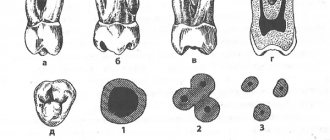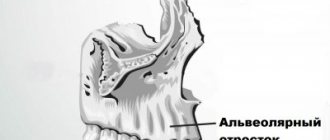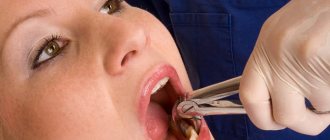The branch of dentistry such as orthodontics continues to develop. Today, there are many different orthodontic treatment methods that help not only improve the aesthetic appearance of the smile, but also normalize the function of the jaws.
Medicine does not stand still; orthodontics is developing more and more every year. Patients become more knowledgeable about smiles and attractiveness. More and more patients are complaining about a narrow smile; they want others to see as many teeth as possible when smiling. How and due to what, and most importantly at what age and what can an orthodontist do? Expansion of the upper jaw can be divided into conservative and surgical. It can also be divided into treatment in childhood, in mixed dentition and in adulthood when all teeth are permanent
Expansion of the upper jaw is indicated in the following cases:
- Micrognathia is underdevelopment of the upper jaw. It may be a consequence of rickets, endocrine diseases, injuries, too early loss of milk or permanent teeth, etc.
- Narrowing of the dentition of the upper jaw , resulting in a pathological crossbite.
- Difficulty in nasal breathing due to insufficient volume of the nasal cavities.
- Mesial occlusion.
- Protrusion of incisors.
Next, we will tell you what methods of expanding the upper jaw exist, what types of non-removable devices there are and what a non-removable plate for expanding the upper jaw is, as well as how the expansion is carried out surgically (surgery).
How often should you visit the orthodontist during treatment and then what?
You need to come to the clinic for device correction on average once every 6 weeks. The correction consists of freeing up space in the plates for the eruption of permanent teeth.
After completing treatment, it is recommended to visit the orthodontist for the first time after six months.
Whether the patient will need orthodontic treatment in the future depends on the stability of the result obtained, which is influenced by many factors, one of which is a possible growth spurt in the child.
Our story has come to an end.
Other examples of orthodontic treatment can be found on the personal page of Irina Konstantinovna Shevchenko.
You will get a lot of useful information from the articles:
- Orthodontics. Why, When and How to correct malocclusion
- A child’s beautiful smile is the care of loving parents
- Correction of distal and mesial bite using additional orthodontic equipment
If you decide to consult with an orthodontist, make an appointment with Irina Konstantinovna Shevchenko >>
Conservative treatment methods, or a fixed device for expanding the upper jaw
In children, the most effective way to expand the upper jaw at the moment is a plate with a screw in the structure. The plates are removable and non-removable. All scientific studies show that an orthodontic structure works most effectively only if it is in the mouth for at least 24 hours a day, hence the conclusion that a non-removable technique works much more effectively than a plate that a child can remove at school, rest, lose, and so on. .
And then... children's aligners appear on the scene!
With the advent of new digital technologies, the orthodontist discovered the world of transparent orthodontics - a painless, convenient method that allows you to set the correct vector for the development of the child’s dental system. Children's aligners are clear aligners that allow teeth to be moved in early childhood.
The first breakthrough in treating children without braces was made by Invisalign. Check out their advertising slogan below - it compares aligners with wireless communication ( Go wireless
), and in context - wireless technology, which we always associate with the braces system (there are also braces and the wire connecting them). The absence of wires and heavy braces on a child’s teeth eliminates many obstacles, inconveniences and removes restrictions on nutrition and hygiene:
The technology of treatment with aligners for children is to align baby (temporary) teeth and also promote the proper growth of permanent teeth. “Children’s aligner, mouthguard – what is it?”, you ask, what is the difference from a plate, what is better to choose? And why don’t all orthodontists offer this type of treatment?
The answer, dear friends, is obvious; this type of dentition correction is a breakthrough for 2022. If previously we had the opportunity to treat adults using aligners, now - hurray! and thank you very much! manufacturers - Invisalign, Star Smile, Flexilainer - for providing the opportunity to correct the bite in children with the help of aligners.
What do children's aligners do as opposed to plates?
Unlike dental plates, bite alignment with aligners in children allows teeth to move in all planes in the same way as with aligners for permanent dentition in adults.
The initially specified correct vector of tooth movement in the aligner treatment technology makes it possible to straighten both the child’s already erupted teeth and those just beginning to erupt.
Thus, aligners for children contribute to the proper growth of permanent teeth.
Early treatment
. Treatment with aligners can begin from the age of 5 while still in the primary dentition. At this age, malocclusion in children is corrected quickly.
Aligners do not damage the enamel, and there are no dietary restrictions when wearing them. On the contrary, it is recommended to eat hard, wholesome foods (among them carrots, apples, cucumbers) in order to train the chewing muscles.
The treatment goes unnoticed by others, the child feels comfortable, they are easily removed and are not noticeable in the mouth
.
He won't be teased
, since the aligners are invisible when you talk or smile.
Alignment aligners are safer
, they are smooth, fit tightly to the teeth, the tongue does not catch on the children's aligner, and speech defects are less pronounced than with other orthodontic systems.
With children's aligners, there is no need to worry about food getting stuck in the aligner.
or hard parts of food will damage the aligners.
The child can brush his teeth and eat as usual: removable aligners do not interfere with hygiene
.
It is much easier for a child to care for aligners than for braces - no special brushes
. For care, simply rinse the aligners with warm water and a special solution or simply brush with a regular toothbrush.
Control of tooth movement on children's aligners
Using a special computer program, the doctor demonstrates the results of orthodontic treatment BEFORE it begins. In 3D format, the child and his parents will see how and in what time frame the teeth will move (a colorful cartoon).
All manufacturers have their own computer programs for 3D visualization of the final result of bite correction in children: Invisalign has the CleanCheck
, Star Smile has a virtual 3D setup, FlexiLigner has the OrthoCheck program.
At each stage of treatment there is a unique opportunity to carry out additional correction according to clinical need, for example: loss of a baby tooth, or premature eruption outside the dentition.
Visit to the doctor
. With early correction of primary occlusion using aligners, visits to the orthodontist are not frequent, once every 1.5-2 months is sufficient. A repeated visit to the doctor does not take much time; basically, the doctor gives the patient sets of aligners and takes photographs during the treatment phase. The appointment takes no more than 15-20 minutes.
Children need to wear aligners constantly, day and night, and remove them only when eating or brushing their teeth. Which is very simple, convenient and very comfortable even for the smallest children.
HAAS device
The most common and convenient to use for both parents and doctors is the non-removable HAAS device. The device is fixed to the temporary teeth on the upper jaw by an orthodontist; it is absolutely invisible to others, but clearly and quickly performs its task. The most successful and appropriate time to work on it is when the central incisors are replaced with permanent ones, i.e. at the age of 7-8 years. The expansion of the upper jaw is carried out through the work of a screw, which the parents themselves tighten based on the recommendations of the attending physician.
Complex orthodontic treatment
Stage I
The first point of the treatment plan was performed by maxillofacial surgeon I.I. Yakimenko. The operation took place in a hospital setting under anesthesia. Before the operation, professional dental hygiene was performed - removal of plaque and tartar (hygienist Sorokina D.).
The intervention is performed through the oral cavity, so no scars are left on the face. A special distraction device is installed in the palate area. After the operation, the patient remains in the hospital for about 10 days, the surgeon monitors the healing process. On days 6-7, the attending physician performs the first activation of the device. Further activation of the device is also performed by the surgeon, gradually, as much as necessary (in millimeters), until the required width of the dentition is achieved.
The photo shows a view with the distraction device installed before fixing the braces:
Stage II
Orthodontist M.P. Sleptsova installed reliable Victory metal ligature braces on the lower jaw and aesthetic, inconspicuous Clarity ceramic braces on the upper teeth. After activation, wearing the palatal distraction device continues for another 4 months. Before installing braces, all Dial-Dent patients receive professional teeth cleaning as a gift (hygienist Smirnova E.).
Removal of the device is performed under local anesthesia. Treatment with braces continues.
Photo after removal of the palatal apparatus:
Stage III
Double-jaw surgery to place both jaws in the correct position was performed by surgeon I.I. Yakimenko. In addition to the attending surgeon, a team of doctors takes part in the operation. The intervention is performed intraorally, leaving no scars on the face. The operation is performed under general anesthesia. Braces are not removed during surgery.
Healing lasted 2 weeks. Further treatment with braces was continued.
Stage IV
The final stage of teeth straightening using a brace system, wearing orthodontic elastics. This stage is very important and necessary to stabilize the results of treatment. At the stage of orthodontic treatment, professional teeth cleaning with braces is carried out to prevent the development of caries.
Retention
After removing braces, treatment does not end - a retention period begins. The orthodontist installed a non-removable wire retainer on the lower teeth, and a retention guard was made for the upper jaw, which must be worn while sleeping.
The recommended schedule for visiting the orthodontist during the retention period is once every 3 months.
Surgical expansion of the upper jaw
The surgical method for correcting the width of the upper dentition is that for an older patient and with the most pronounced defect of the upper jaw, the surgeon installs an apparatus in the area of the palatal suture, which carries out the “growth and expansion” of the jaw. Surgical expansion of the maxilla is the most effective method of expansion, although it is somewhat traumatic.
The device installed during the operation can be activated only on the third day. The first activation is carried out by the attending physician, and later this procedure can be carried out by the patient himself at home. The installed palatal expander must be worn for approximately 3-4 months after the maxillary expansion surgery has been performed.
In any case, the choice of method and determination of the period depends on the clinical picture, the desire of the patient and the capabilities of our dentofacial system.
Correction of any bite problems in children by our pediatric orthodontists:
- treatment with a smile, no stress for the child, no discomfort
- accurate diagnosis of more than 50 parameters before bite treatment
- treatment using both removable and non-removable equipment
- 100% solution to the problem of maxillary expansion
- noticeable treatment results after 2.5 months.
How is jaw expansion carried out in children and adults?
There are conservative methods that allow you to expand the dentition without surgical intervention. In most cases, the use of plates and fixed devices gives a stable and long-lasting result, but patients with complex pathologies require surgical correction.
The devices act systematically and delicately, so they do not cause pain to an adult or child. Under the influence of a slight force, the teeth move smoothly and the structure of the bone tissue is transformed. As a result, the narrowed dental arch increases.
How does a jaw expansion plate work?
Plates are recommended for bite correction at the age of 5-11 years, which makes it possible to cope with complex defects in the jaw relationship during the development and growth of bones. Plates for jaw expansion for children are made personally. After correction is completed, additional permanent structures may be required.
The orthodontic plate with screws consists of a steel spring and a part with a sectoral cut. To flatten the anterior part, the plate is equipped with vestibular arches. A removable appliance is fixed with clasps, a non-removable one is fixed with crowns installed on molars or premolars.
When is a jaw retraction device used?
A device for jaw expansion is used in cases where braces or plates will not give the desired result due to lack of space in the dental arch or congenital anomalies of the oral cavity. The device consists of rings that are installed on the lateral teeth and connected by arches. There is a screw in the central zone, the movement of which activates the operation of the device.
Under the influence of pressure, the median palatal suture opens and the jaw expands. The gap is quickly closed with restored bone tissue. In case of treatment of a child
Excellent results are possible, since as the patient grows older, the palatal suture becomes hard and more difficult to open. When treating adults, preliminary surgical dissection of the palatal suture will be required. During the correction process, the orthodontist often works together with the surgeon.
Main functions of the palatal expander
Palatal expanders are used to correct the upper jaw. The device has the shape of a cross, each edge of which is attached to the molars, and in the central zone there is a working sliding part.
Correcting the bite with a palatal expander in children will take about three weeks, but for adult patients this process may require a longer period. The cost of jaw expansion is offset by the result obtained: the gap is gradually filled with new bone tissue.
Mandibular distraction systems
Expansion of the mandible is performed using distractors. The devices ensure gradual divergence of the dentition with the simultaneous formation of new tissue. This method of correction gives a particularly pronounced result in childhood. In adult patients, dissection of the central zone of the lower jaw with an ultrasonic scalpel is required.
Devices of various types have unique designs, depending on the purposes and conditions of use. Many devices are suitable for treating adults and very young children. Such age-related indications make it possible to correct many congenital jaw anomalies in advance.
Based on: 7 votes











